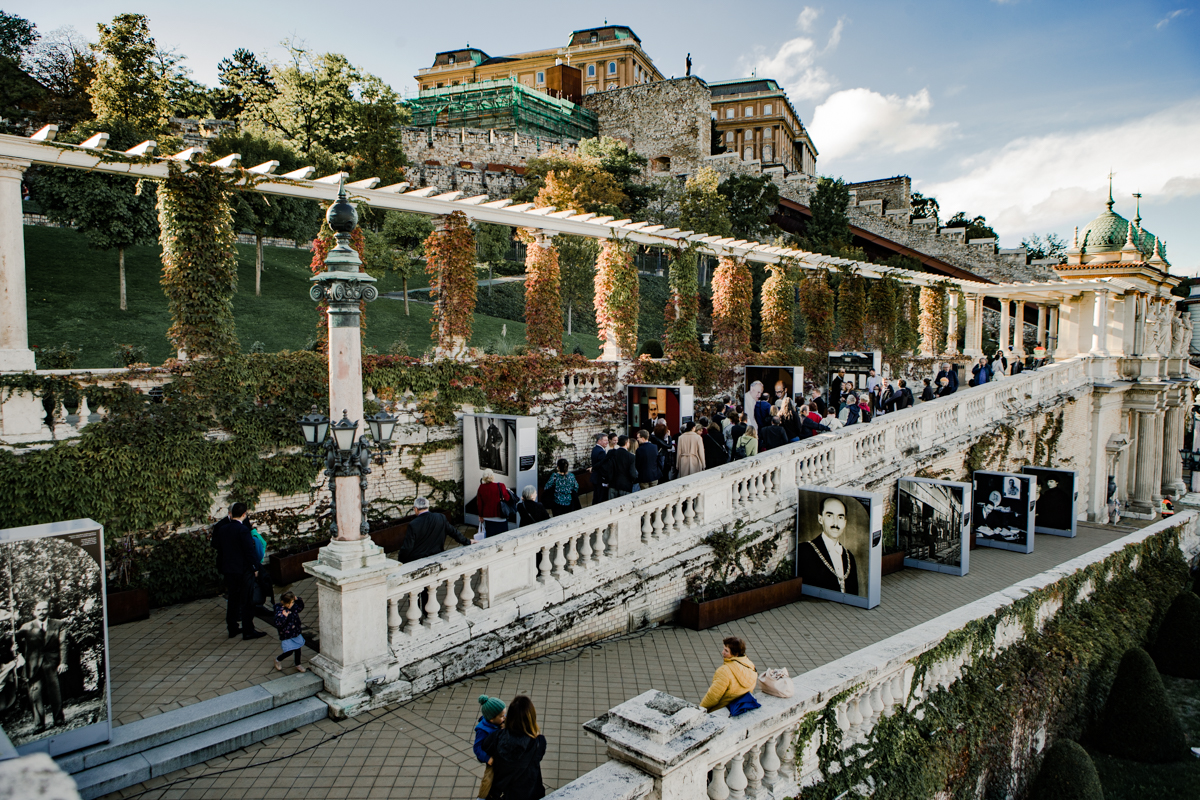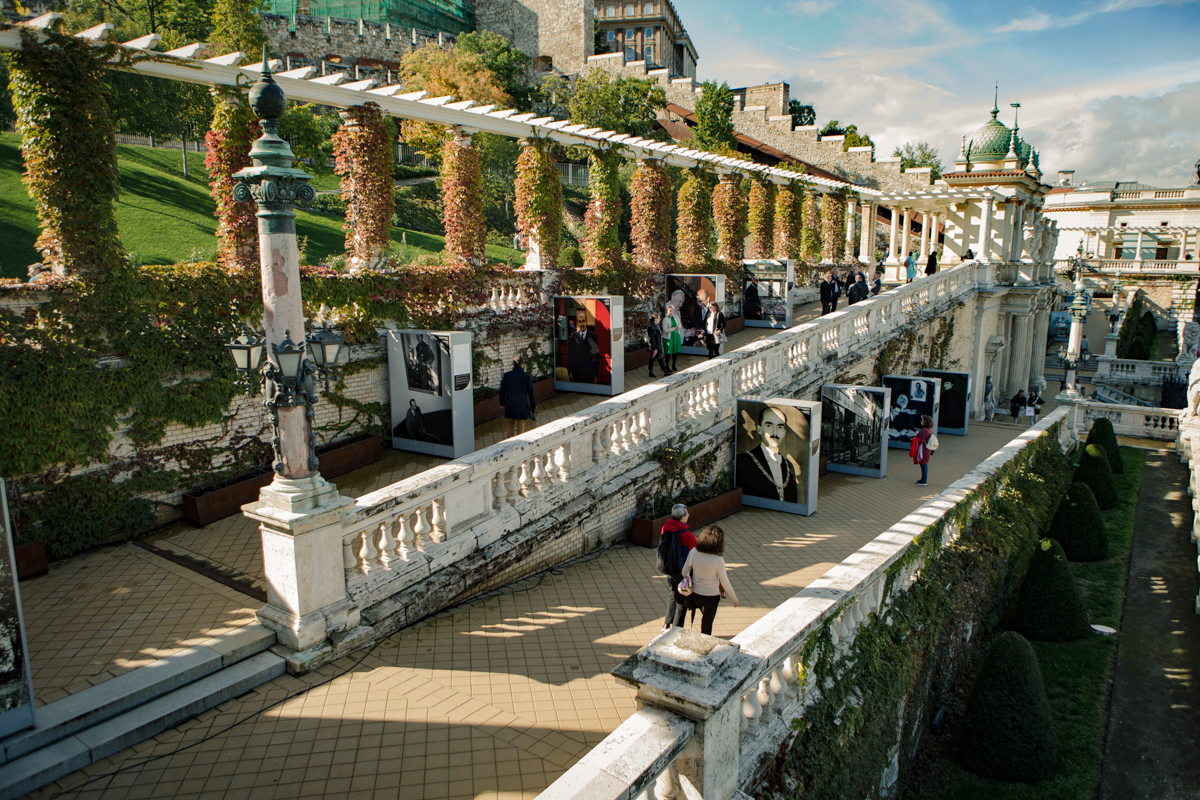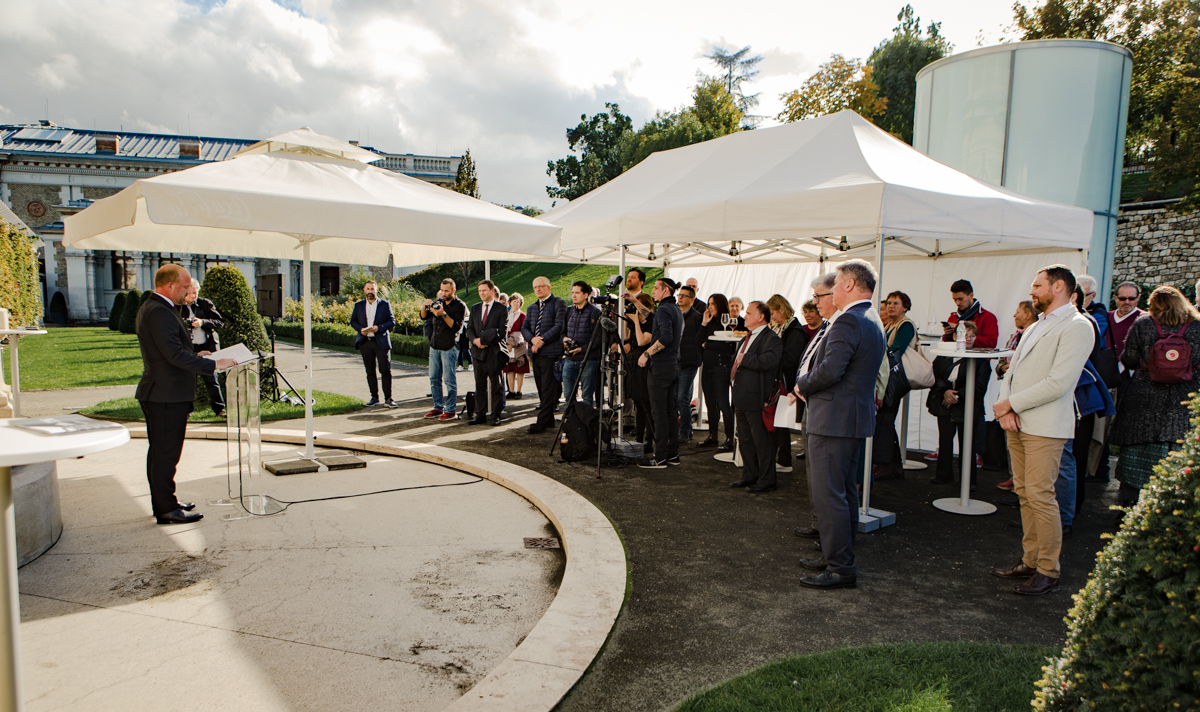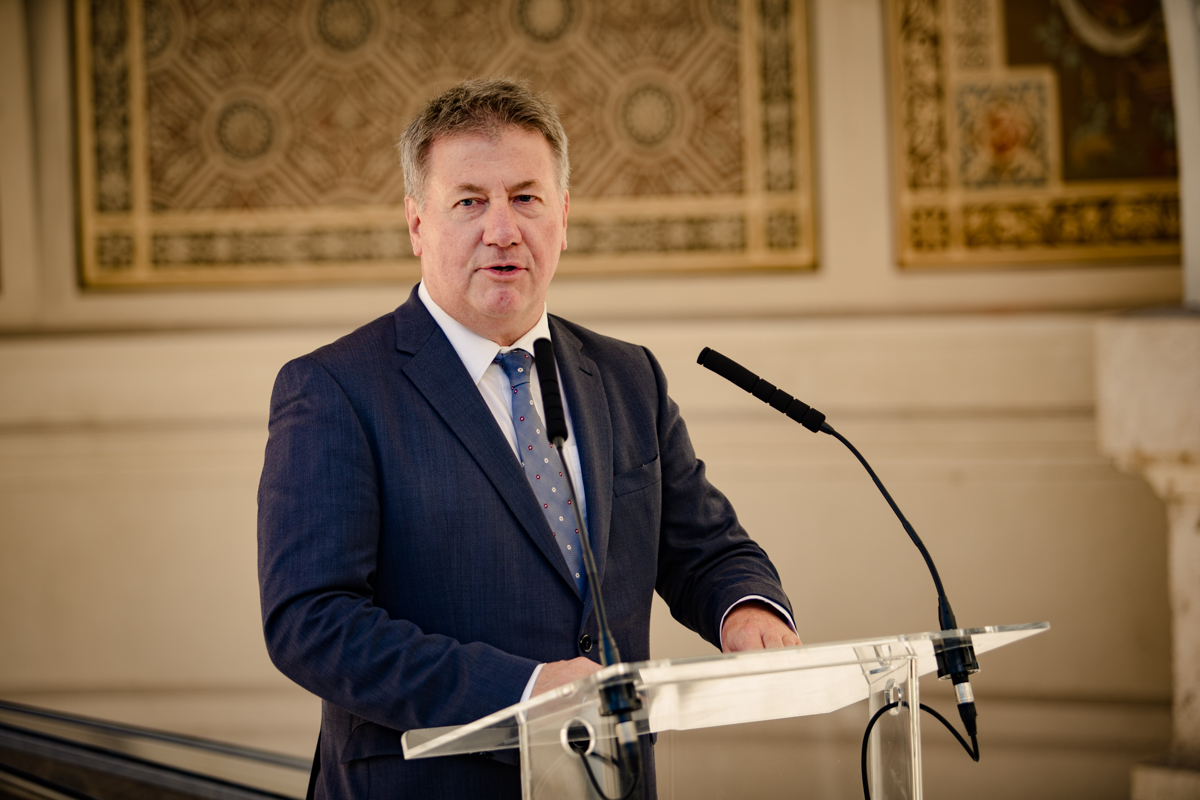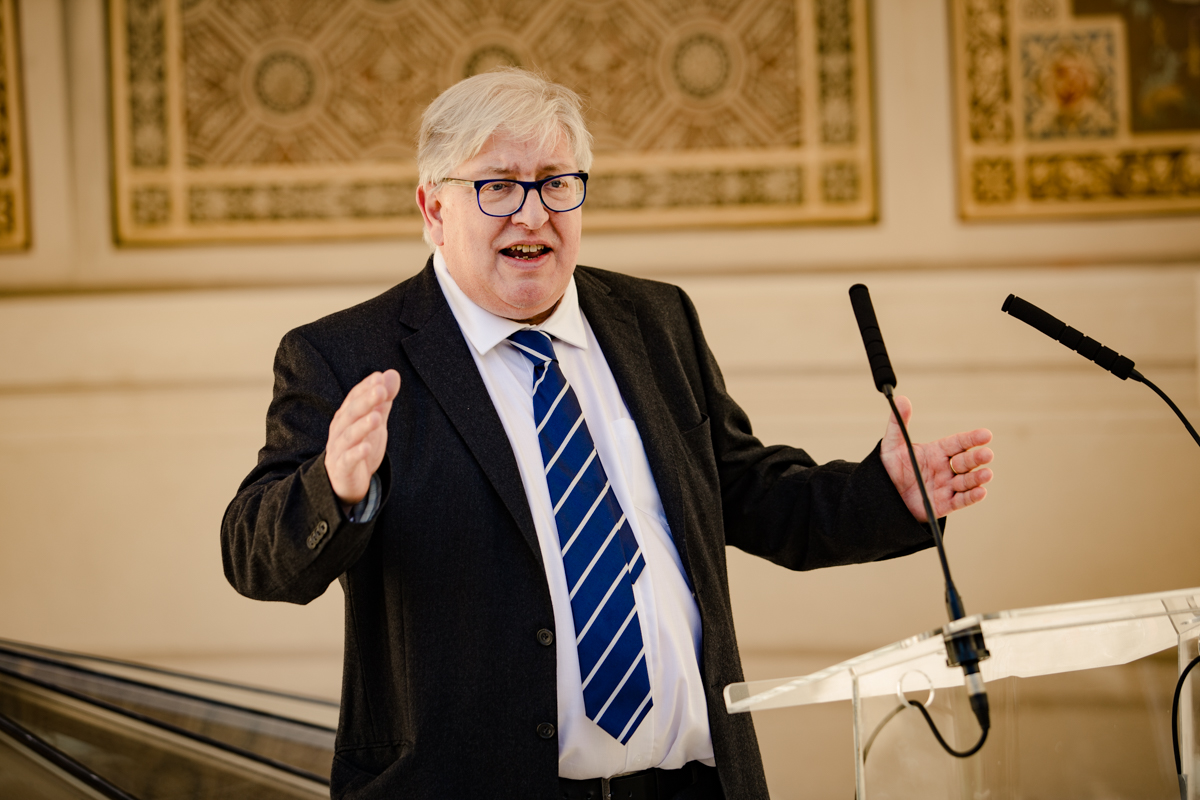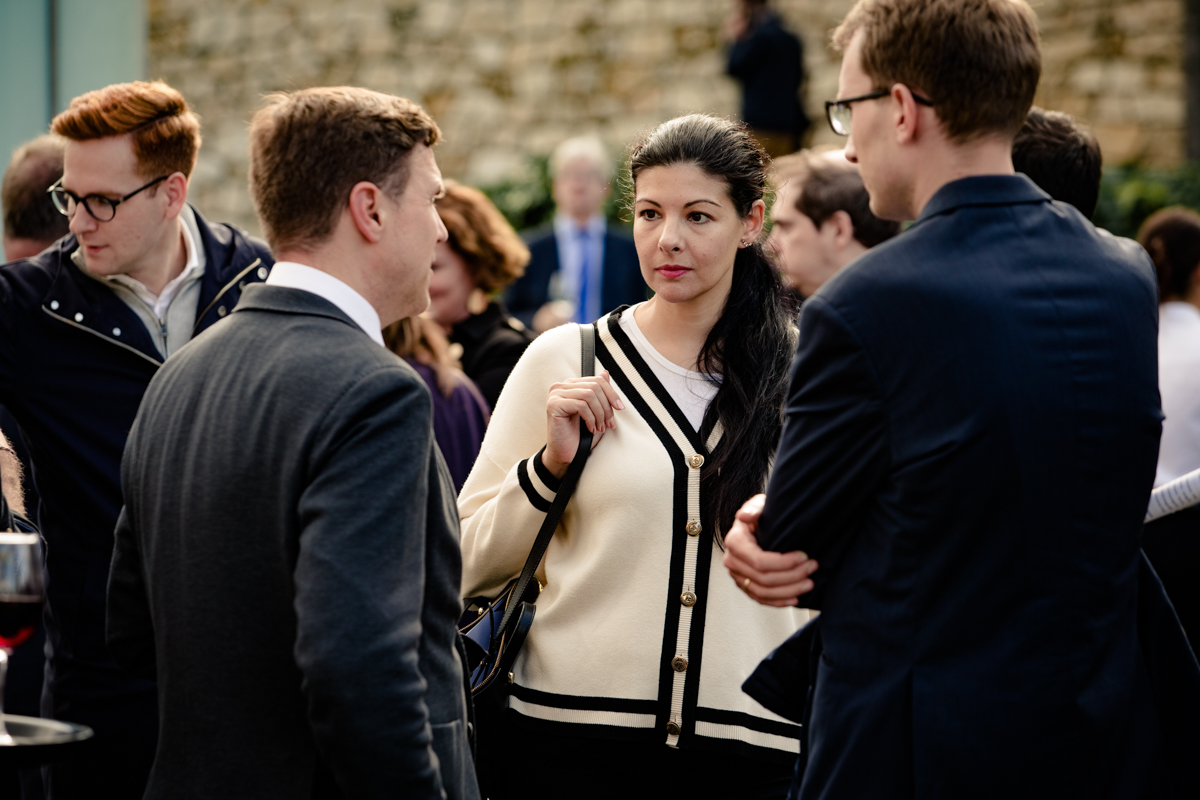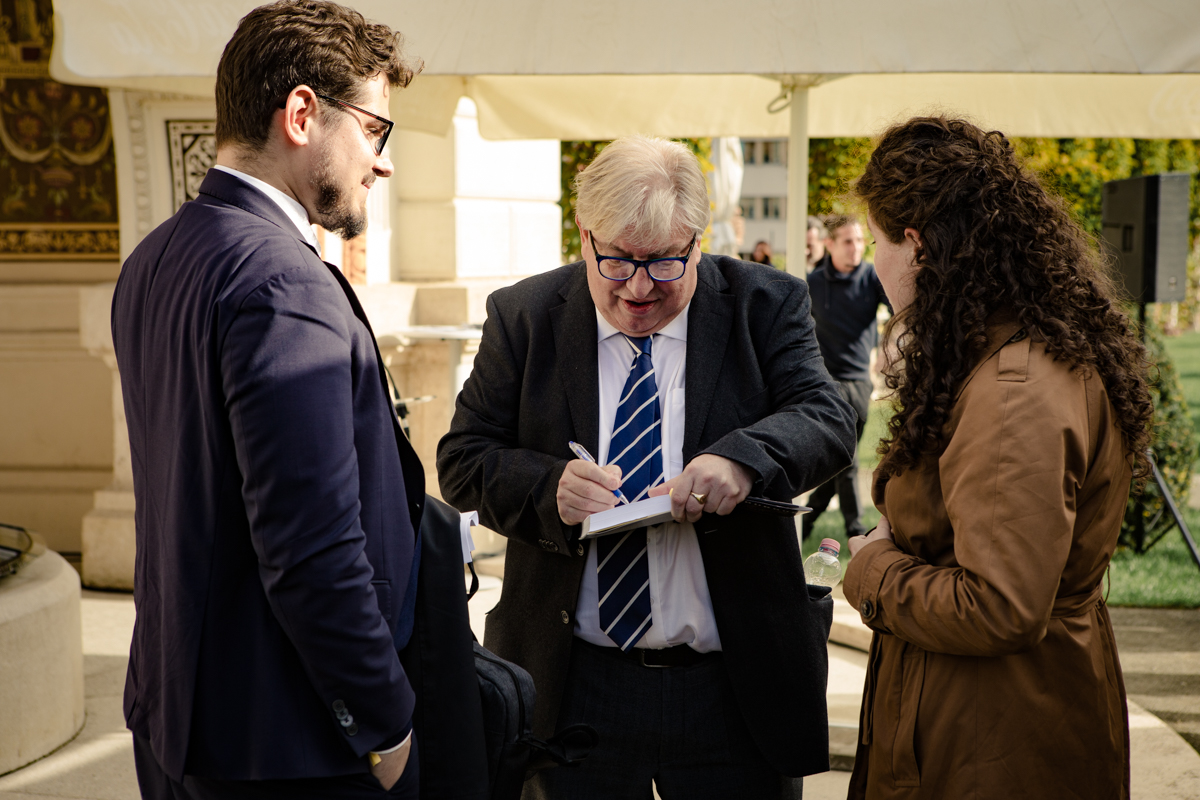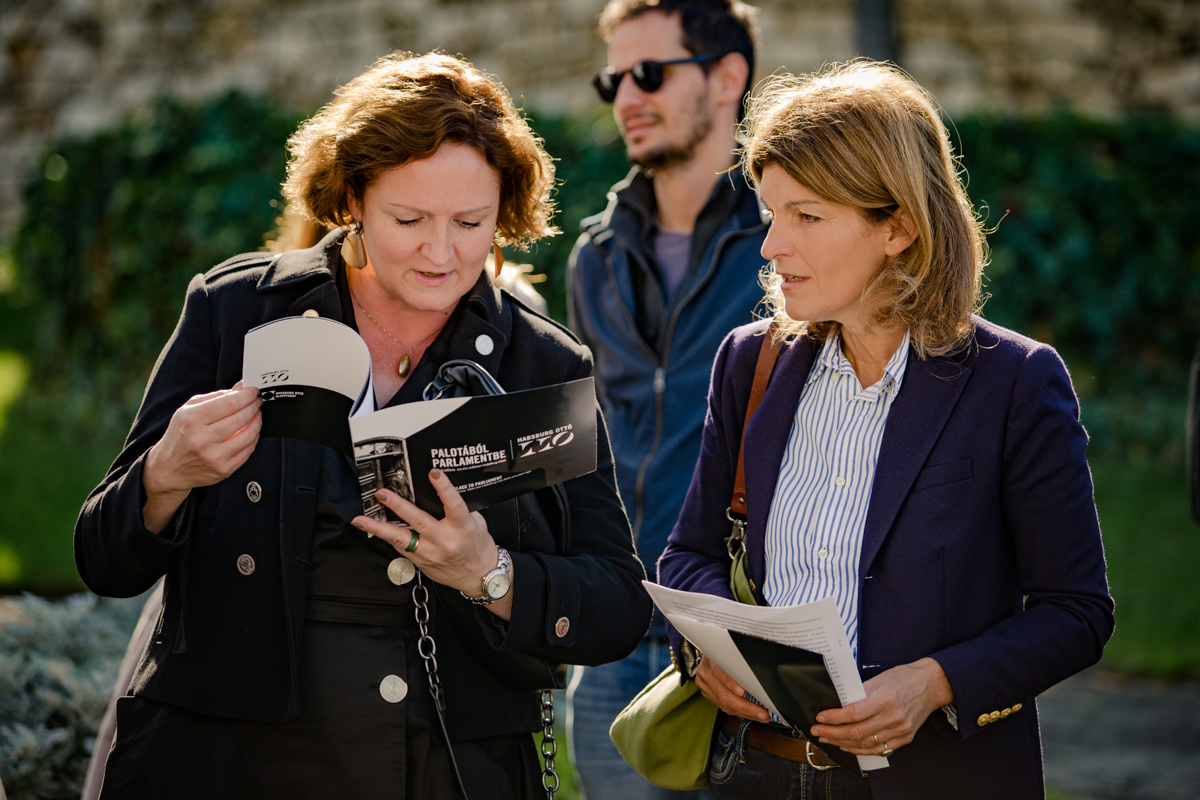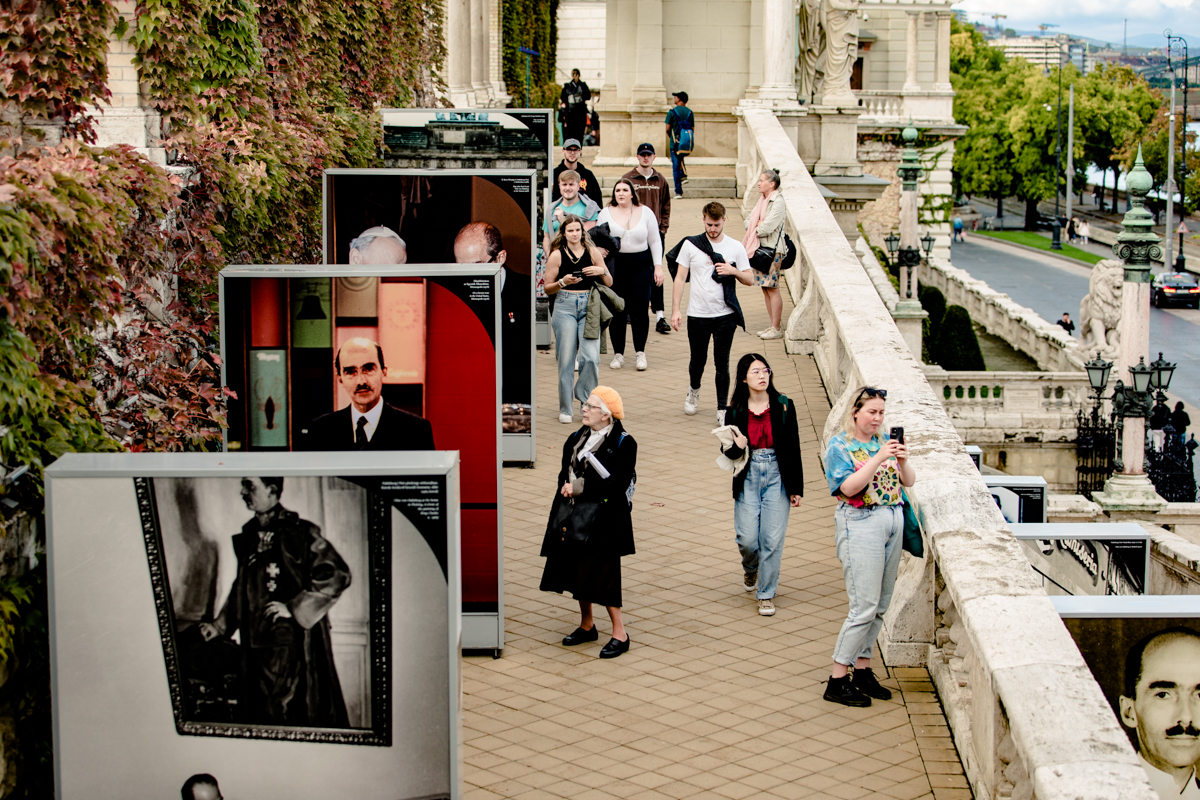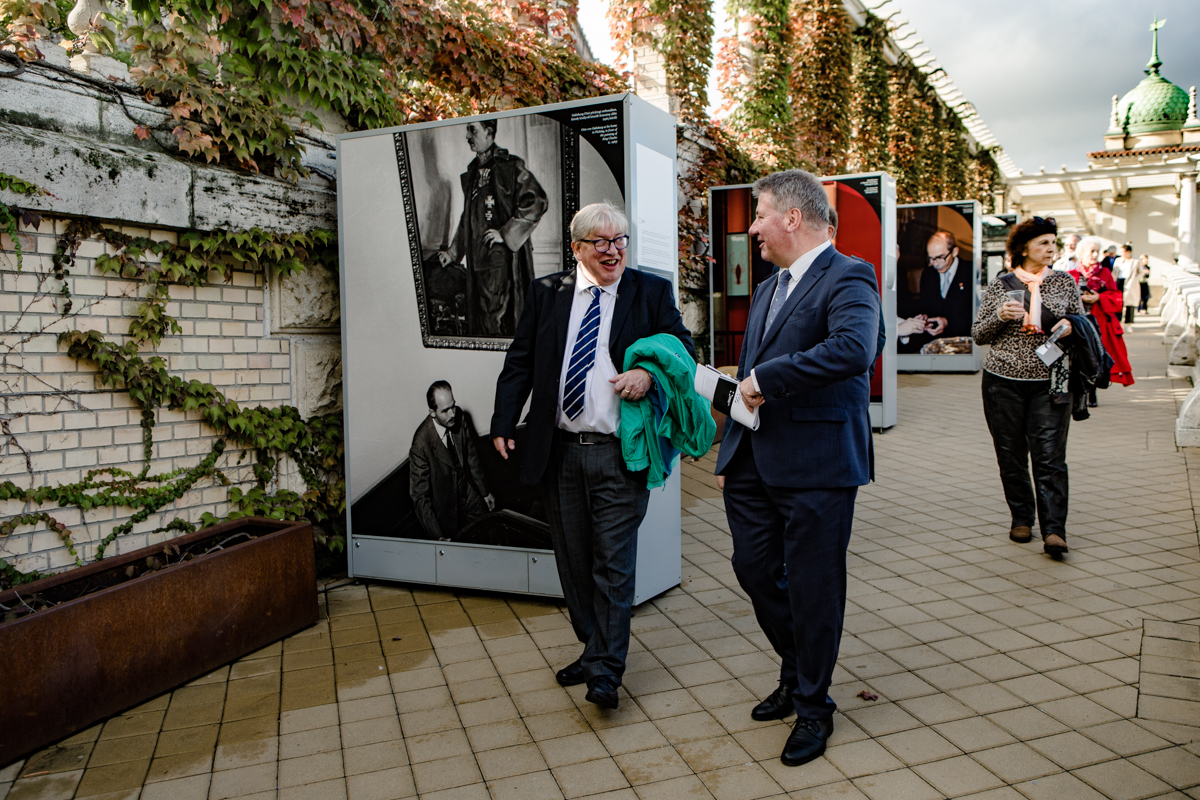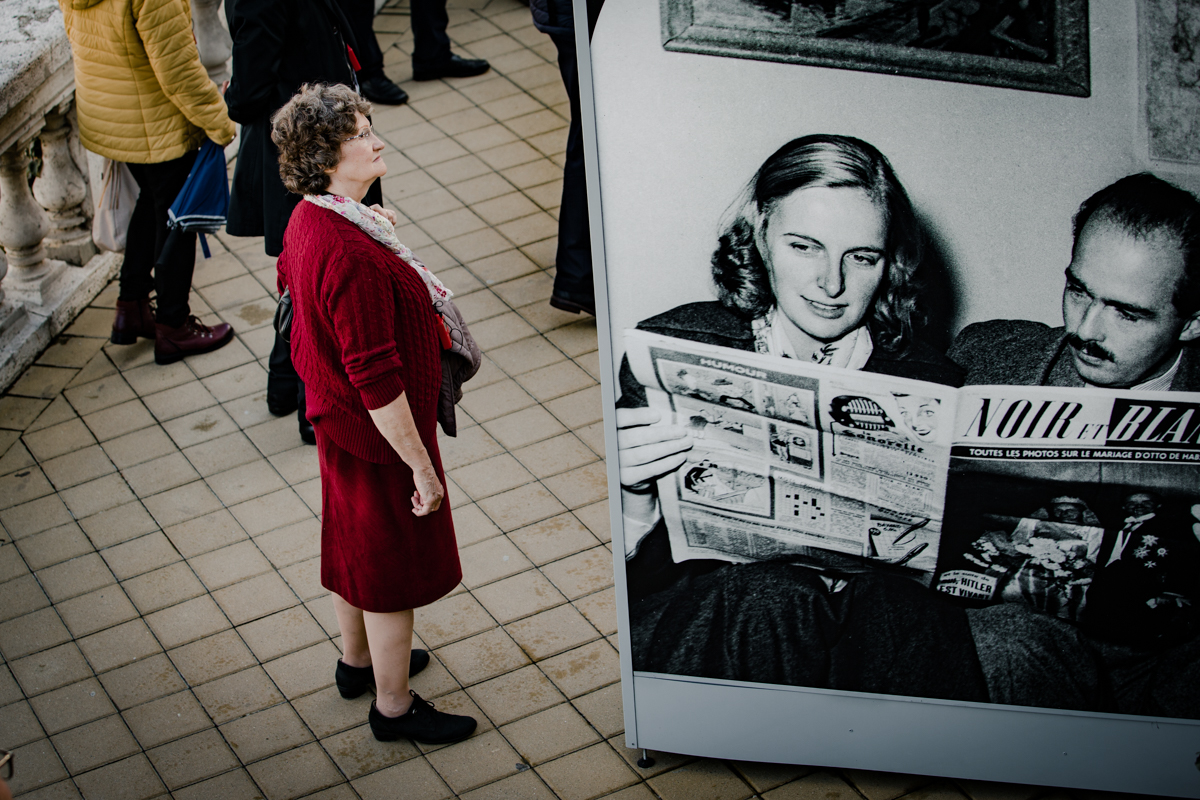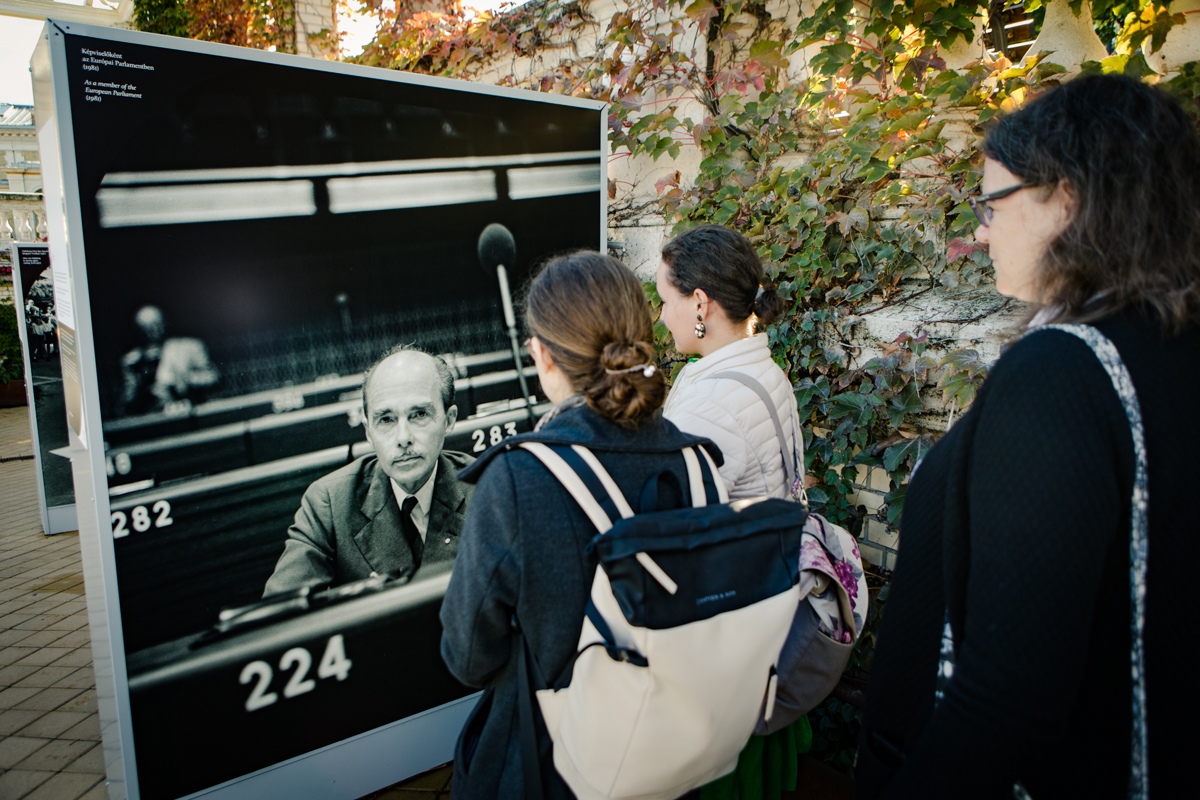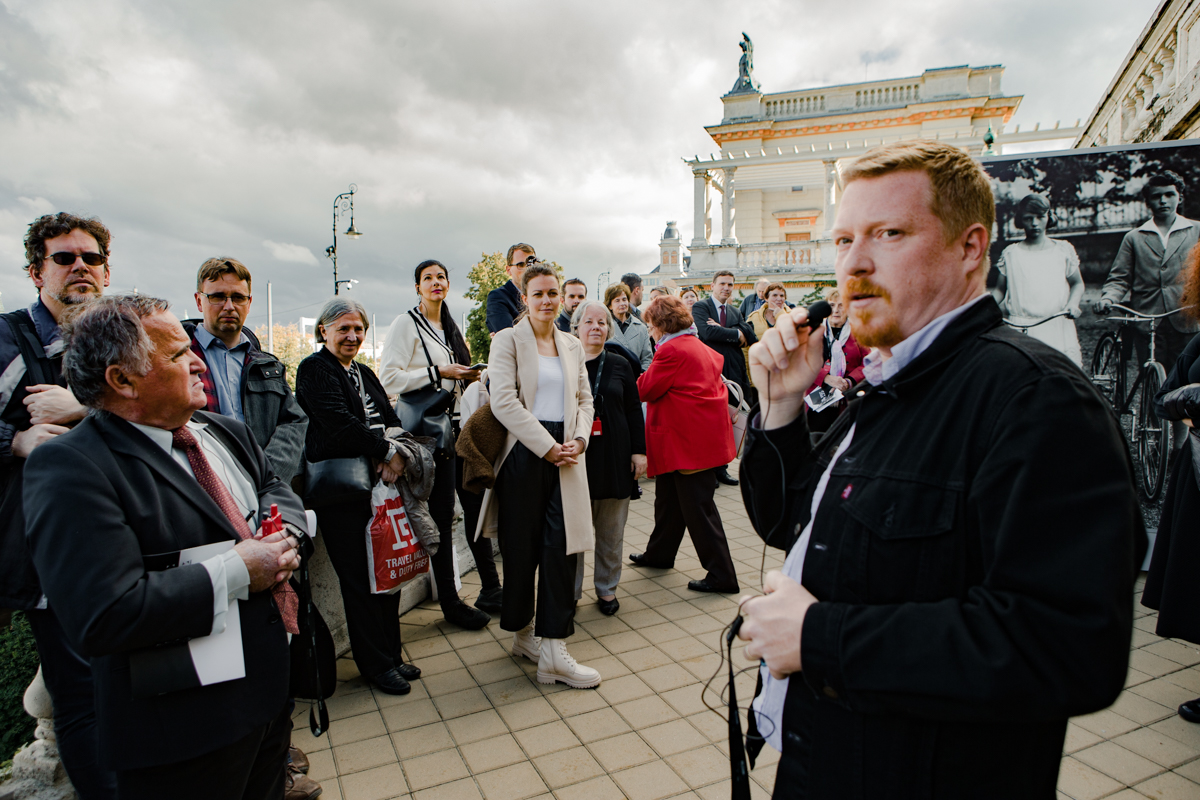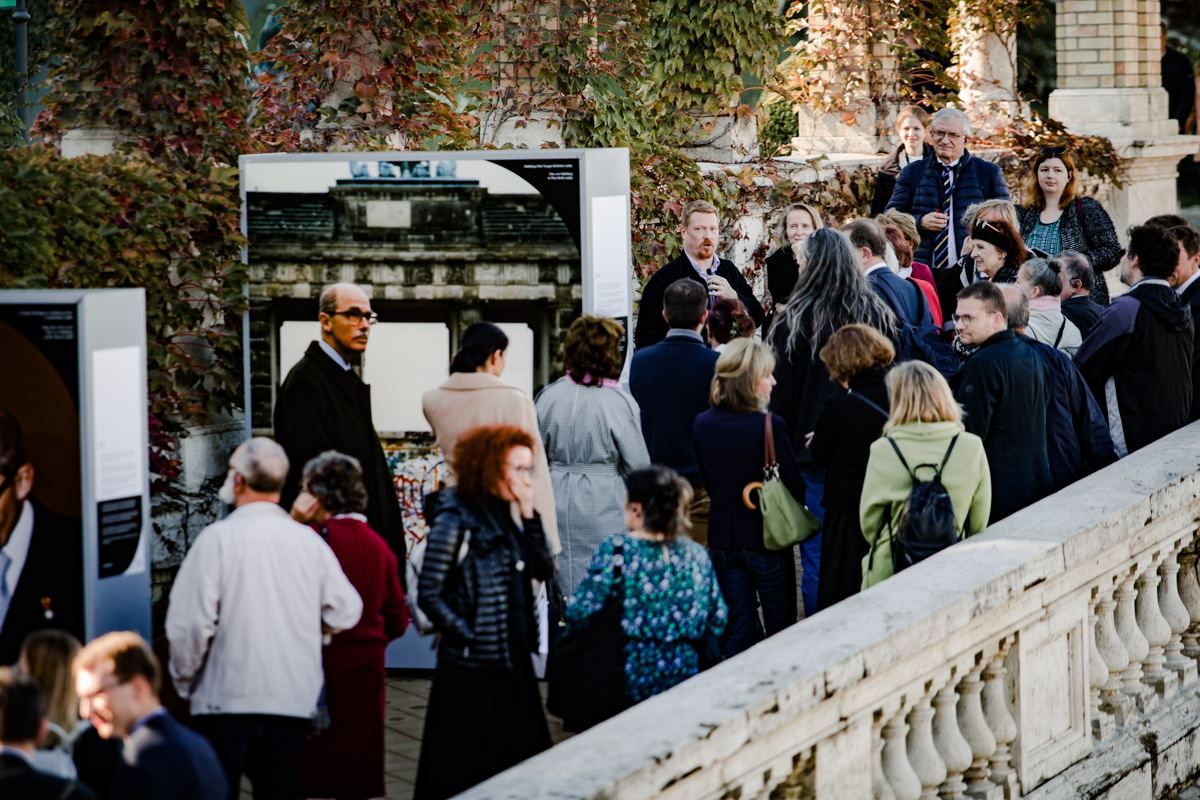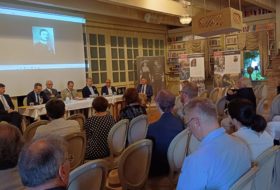To mark the 110th anniversary of the birth of Otto von Habsburg, our Foundation is preparing an international series of events, the first being a photo exhibition of the life and work of the former heir to the throne in the Renaissance Garden of Várkert Bazár.
In his welcoming speech, Gergely Prőhle, Director of the Otto von Habsburg Foundation, made the following remarks: “The exhibit’s title is From Palace to Parliament because we remember Otto von Habsburg not only as a former heir to the throne but also as a former member of the European Parliament. Who, as a Hungarian patriot, did everything he could for twenty years from 1979 to end the division of Europe and to promote the interests of Hungarians beyond the borders. He was also the first to speak in Hungarian in the EP.”
He pointed out that Martyn Rady was very apt when he wrote in his recently published book The Habsburgs – The Rise and Fall of a World Power that Otto von Habsburg “was the best emperor the Habsburgs never had“. Hence the title of Professor Rady’s opening speech. Gergely Prőhle added that these pictures were a foretaste of the photo book that will be published in the near future to honour the anniversary. Our Foundation’s collection contains 30,000 photographs, and we have selected many for the exhibition that have not been shown before.
Gergely Fodor, Government Commissioner for the Renewal of the Palace District of Buda and Chairman of the Board of Directors of the Castle Headquarters Integrated Regional Development NZrt., declared that the Hungarian government is repaying its debt to Otto von Habsburg by restoring the buildings and halls of the Buda Castle to their original beauty. “With the help of these tableaux, we can gain an insight into a unique and unparalleled life story. We can see the child, the brother, the father, the devoted Christian, the great politician committed to the European and Hungarian cause, who, despite the hardships of decades of ostracism, always preserved his humanity, his good temper and his humour”, Gergely Fodor highlighted.
He added: “It is our responsibility to discover, preserve and nurture the intellectual heritage he left us so that the future generations will not forget his memory and legacy.”
Martyn Rady, Masaryk Professor Emeritus of Central European History at the School of Slavonic and East European Studies, University College London, pointed out in his speech that Otto von Habsburg was European above all else; as the Crown Prince himself put it at the time: “Europe is for all Europeans, and the right of nationality is for all without exception.” He recounted that “with the fall of the Habsburg dynasty in 1918, at the age of six, Otto became a non-person, stripped of his titles and property, and was denied even a passport between the two world wars. This collection of pictures gives us a glimpse into his daily life, showing his love for his mother, Empress Zita, and the modest financial circumstances of their exile in Spain.” Professor Rady spoke about how Otto earned the Nazis’ unremitting hostility; how he joined the Paneuropean Union movement in the 1930s and became its leader in 1973; and how he was elected to the European Parliament in 1979, where he served for 20 years. He also described how he arranged the Paneuropean picnic on the Hungarian-Austrian border in 1989, which enabled around 600 East German refugees to escape from Hungary to Austria. He concluded his speech with a quote:
“As Jerzy Buzek, the former Polish Prime Minister and former President of the European Parliament, once said, Otto von Habsburg kept alive the flame of hope for the reunification of Europe in the darkest hours of our continent.”
The outdoor photo exhibition on the life of Otto von Habsburg will be on display and free of charge until 1 December 2022 on the ramp leading to the gloriette in Várkert Bazár. This occasion is opening a series of events that will take place in the coming months, including several exhibitions and conferences in Hungary and abroad.
Our complete programme is available by clicking here.
(MTI)
Photos by Zoltán Szabó
